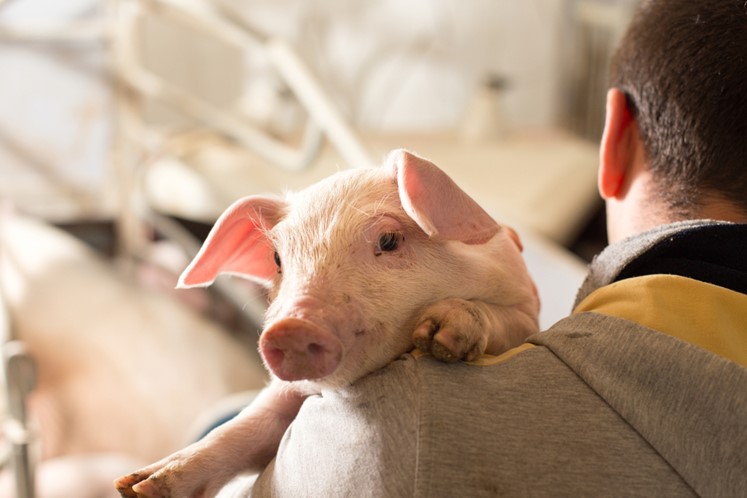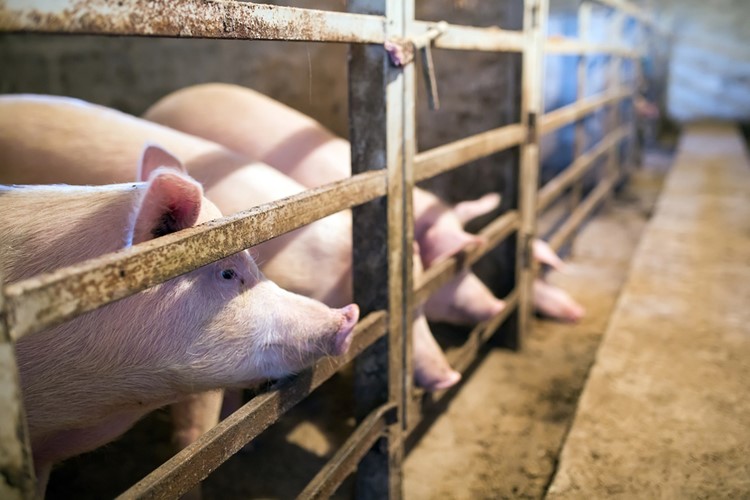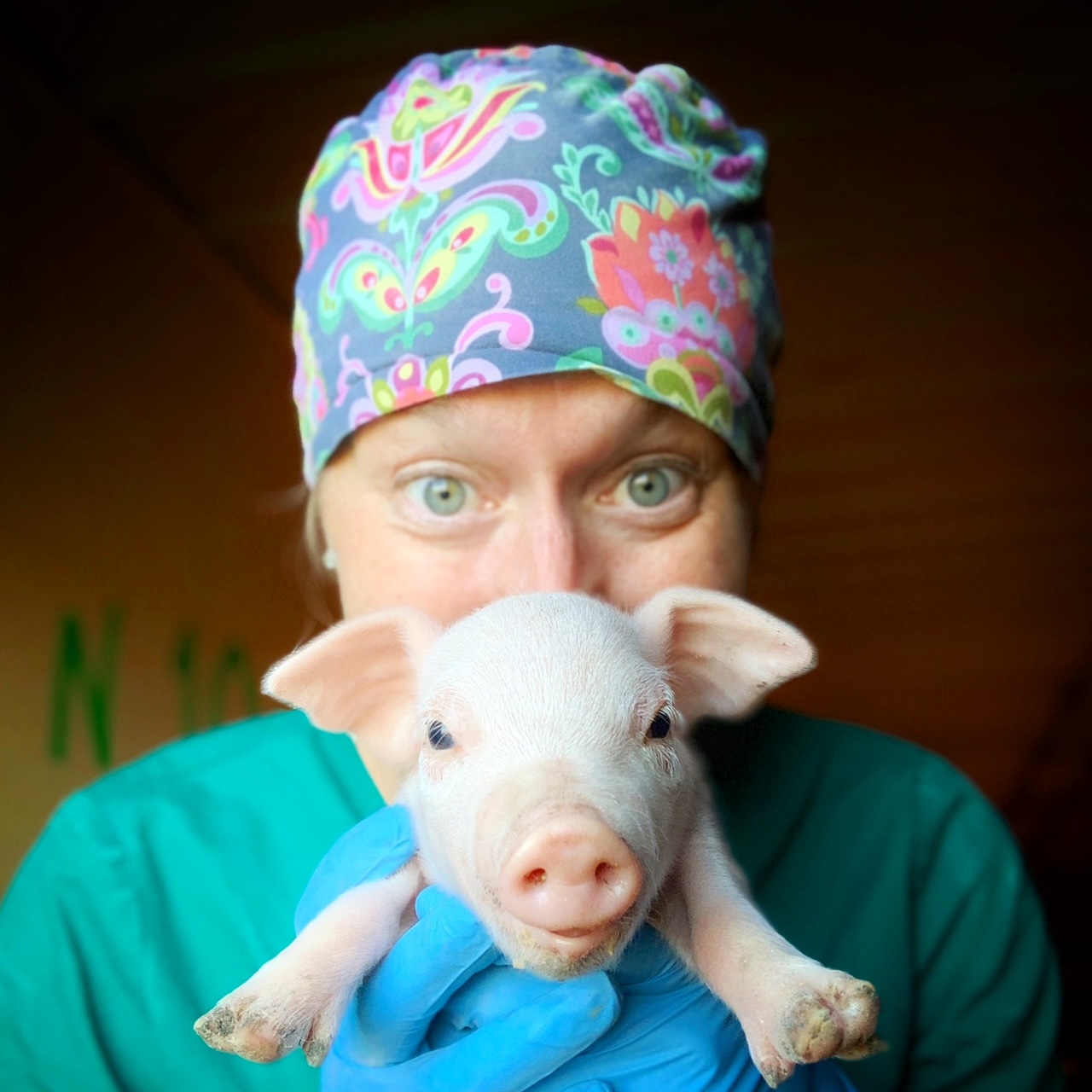Pork has long been an industry of tradition, from farms passed between generations of a family to the leadership the producers who have built the modern industry have shown to newcomers. However, as conversations about food, sustainability, and consumer opinions continue, it’s important to consider how to highlight the careful customs of pork production in conversations with consumers. How does a producer show their passion for what they do to a shopper considering which protein to buy? Insights from Rob Brenneman, long-time farmer and owner of Brenneman Pork®, and consumer Brennan Kelly shine a light on the intersection of consumer concerns and producer practices in the pork industry.
Real Pork
When asked what consumers are looking for in pork, Kelly says that the bottom line is a product that is fulfilling and tastes good. More specifically, he says that concerns about added hormones in meat production are always in the back of his head, so when he’s at the meat case, he also wants to be certain that the full flavor he’s looking for comes from a nutritious, real, well-fed animal.

To that, Brenneman explains, first and foremost, that “there are no hormones used in pigs; [there] never has been and never will be.” In fact, the National Pork Board has for years been pushing an initiative for Real Pork, a commitment to pork grown for real people via tangible, healthy means. Moreover, Brenneman Farms is committed to using as many local resources and appropriate technologies as possible to support the animals housed in its facilities. For instance, the ingredients fed to Brenneman Farms’ 32,000 sows are sourced from farms within a 20-mile radius, and the fertilizer used to grow those crops is derived from waste from these same animals. As far as animal health and care, sows are housed separately to limit the spread of disease, and the air pumped into their barns is filtered for the same reason. More simply though, Brenneman says that his facilities, at a basic level, are looking to get pigs warm, dry, and fed, particularly after birth. By remaining dedicated to excellent husbandry, Brenneman and others running operations like his create the authentic pork that consumers like Kelly want to see.
As far as what the business is looking to do next to advance that level of care and quality of product even further, Brenneman Farms has research barns investigating how to improve meat quality via measures such as selective breeding, altering pH levels of pork, or even modifying genomes—by deleting certain detrimental traits, not adding anything artificial. No matter what the industry may be experimenting with, it remains true to its goal of providing the most authentic pork possible for the market.
Consumer Expectations
Having heard that information, then, Kelly adds that he’s a fan of pork because the industry is “more down to earth than very, very large manufactur[ers] of food.” That said, however, he wonders why pig production has largely moved indoors instead of leaving pigs outside the way they have been traditionally. If the industry is working toward sustainability, why remove pigs from the environment?

While an understandable question for a consumer, particularly a consumer who hasn’t worked in the industry, to have, Brenneman explains that what may seem like a natural environment for pigs to live in isn’t necessarily the best environment to produce them.
By keeping pigs indoors, Brenneman’s facilities reduce the risk of health issues such as worms and mange, and by keeping pigs in a confined space, it’s easier for employees to monitor pens and prevent crushing incidents, wherein mother sows (which weigh nearly 400 pounds on average) suffocate their piglets by laying on them. Indoor production also supports the production goal and consumer interest in real pork: by limiting exposure to mud and other contaminants, farmers have to introduce fewer antibodies to maintain pig health. These measures, combined with others such as air filtration, have created a 40% increase in farrowing rate over the past several decades, and pork continues to work to improve from there.
Sustaining Communities
As far as Kelly’s concerns about sustainability go, Brenneman brings up an important point: indoor production, while perhaps not the environment a trend-based version of sustainability imagines, creates a reliable food supply. He gives the example of his barns, which send approximately 1.2 million pigs to market a year, versus a family friend that keeps a few pigs outside on her house’s property. The pig raised outside produces, at most, 2 piglets a year, barely replacing herself. This model simply doesn’t work for large-scale production.
Plainly put, Brenneman states that producers have to consider their “moral obligation to feed the world.” When it comes to feeding two people or two million, producers have to choose the more productive option if they want to run a business and fulfill their role in agriculture; “We have an obligation to be efficient,” Brenneman asserts. Organic operations can satisfy a niche market for those who have the option to choose more about their protein, but the pork industry is structured around supporting as many people as possible, especially families who need economic food—and the families that make it.
Kelly stresses that one of the things that’s most appealing for consumers about pork is that it’s notably family-oriented, and Brenneman has the stats to back that up. Brenneman explains that over 90% of pig operations are family owned and that even when pigs arrive at larger facilities they’re sourced from family farms. Furthermore, Brenneman Farms and other players in the industry are working to create a system where a producer could feasibly buy a package of pork with a QR code that could pinpoint the farm that made it. People like to see exactly what they’re supporting, and pork has great roots to highlight for a consumer.
So, then, what does a consumer need to see from family farms and producers to build trust in their model? Kelly says the concept of those QR codes is fantastic, and that could be complemented by more community involvement, such as inviting kids or even teenagers looking for a well-paying job to tour farms and learn more about the process of pig production. Moreover, he says that it’d be great if the industry could do more to broadcast what they’re already doing well. Producers clearly care about what they do, so being more transparent about goals, limitations, and quality-control measures that already exist in the industry could win more market support.
To that, Brenneman offers a cheerful invitation for Kelly to visit his facilities and see how his people work to create a great product—and also the invitation for those curious about industry practices to simply ask: “There’s nothing we are afraid of sharing.” He’s already invited journalists from across the country to view his facilities and get hands-on experience in a barn, from breeding sows to offering photos of the piglets once they’re born, with the end goal of making as many people as possible feel included in the pork community.
Pork, then, is a complex industry that has to cater to various needs and concerns from both inside and outside its network of producers. However, with the passion and genuine care for the craft that has tirelessly powered the industry into what it is today, pork will continue to create an authentic product that has real appeal for real people and the communities they love.

For more information on this topic, listen to Rob Brenneman and Brennan Kelly’s full statements on Popular Pig®: The Producer to Consumer Relationship.
By Isabella Rivera
—
Want to stay up to date with SwineTech®? Keep an eye on the Popular Pig podcast and the rest of our blog for releases that bring you the freshest cut.
